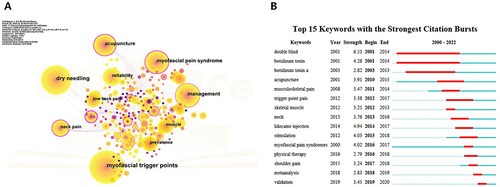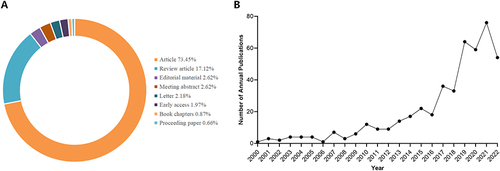Figures & data
Table 1 The Topic Search Query
Table 2 Top 5 Scholarly Journals Related to Dry Needling on MPS
Table 3 Top 5 Cited Journals and Centrality Related to Dry Needling on MPS
Figure 2 Cited journal map related to research of DN treatment for MPS. The nodes in the map represent journals, and links between the nodes signify cooperation relationships. The diverse colors of the nodes represent different years. The larger the node area, the greater the number of co-citations. The purple ring indicates centrality of literature, and nodes with high centrality are considered as pivotal points.
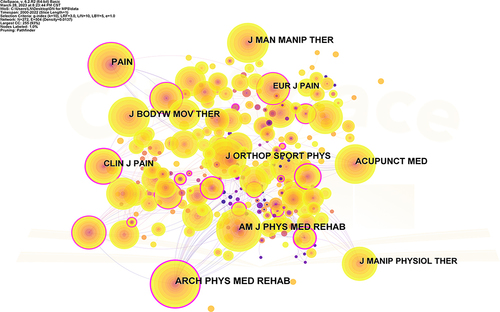
Figure 3 The dual-map overlay of citing journals and cited journals on articles related to DN for MPS. (The left side were the citing journal, the right side were the cited journal, and the line path represents the citation relationship).
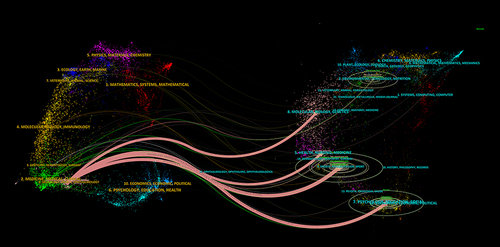
Table 4 Top 5 Publications and Centrality of Countries Related to Dry Needling on MPS
Figure 4 Map of countries concerning researches of DN treatment for MPS. The nodes in the map represent countries or territories, and links between the nodes signify cooperation relationships. The diverse colors of the nodes represent different years. The larger the node area, the greater the number of publications. The purple ring indicates centrality of literature, and nodes with high centrality are considered as pivotal points.
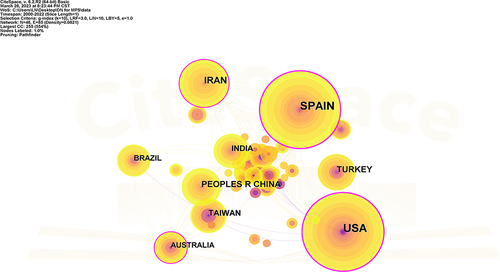
Table 5 Top 5 Publications and Centrality of Institutions Related to Dry Needling on MPS
Figure 5 Map of institutions related to DN treatment for MPS. The nodes in the map represent institutions, and links between the nodes signify collaborative relationships. The diverse colors of the nodes represent different years. The larger the node area, the greater the number of publications. The purple ring indicates centrality of literature, and nodes with high centrality are considered as pivotal points.
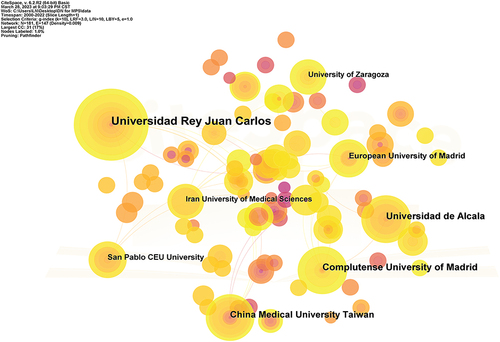
Table 6 Top 5 Publications and Centrality of Authors Related to Dry Needling on MPS
Figure 6 Map of authors dedicating to DN treatment for MPS. The nodes in the map represent authors, and links between the nodes signify collaborative relationships. The diverse colors of the nodes represent different years. The larger the node area, the greater the number of publications. The purple ring indicates centrality of literature, and nodes with high centrality are considered as pivotal points.
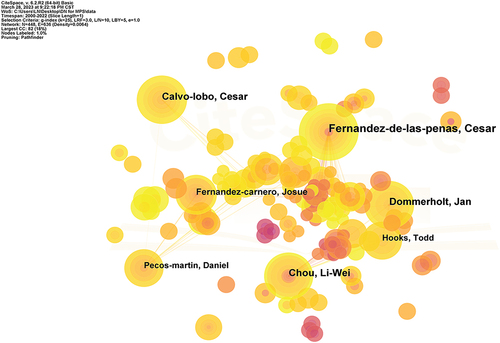
Table 7 Top 5 Publications and Centrality of Cited Authors Related to Dry Needling on MPS
Figure 7 Map of cited authors dedicating to DN treatment for MPS. The nodes in the map represent co-cited authors, and links between the nodes signify co-citation relationships. The diverse colors of the nodes represent different years. The larger the node area, the greater the number of co-citations. The purple ring indicates centrality of literature, and nodes with high centrality are considered as pivotal points.
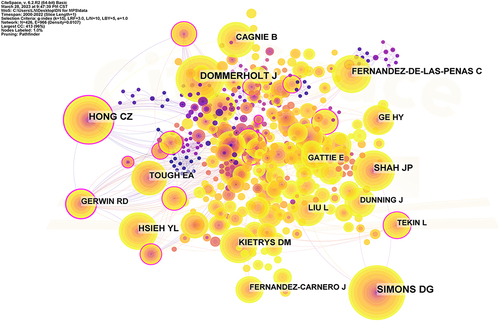
Table 8 Top 5 Frequency of Cited References Related to Dry Needling on MPS
Table 9 Top 5 Centrality of Cited References Related to Dry Needling on MPS
Figure 8 (A) Map of cited references related to DN treatment for MPS. The nodes in the map represent cited references, and links between the nodes signify co-citation relationships. The diverse colors of the nodes represent different years. The larger the node area, the greater the number of co-citations. The purple ring indicates centrality of literature, and nodes with high centrality are considered as pivotal points. (B) Timeline view of DN for MPS.
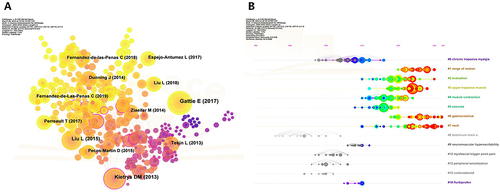
Table 10 Top 5 Frequency and Centrality of Keywords Related to Dry Needling on MPS
Figure 9 (A) Map of keywords related to DN treatment for MPS. The nodes in the map represent keywords, and links between the nodes signify co-occurrence relationships. The diverse colors of the nodes represent different years. The larger the node area, the greater the number of co-occurrences. The purple ring indicates centrality of literature, and nodes with high centrality are considered as pivotal points. (B) Top 15 keywords with the strongest citation bursts. The red line indicated a sudden burst of keywords during the relevant period, whereas the blue line means unpopularity.
